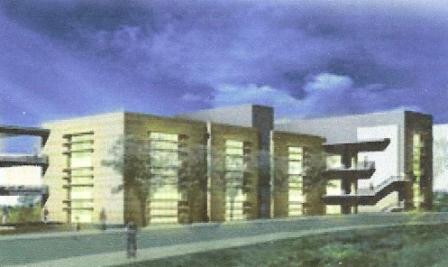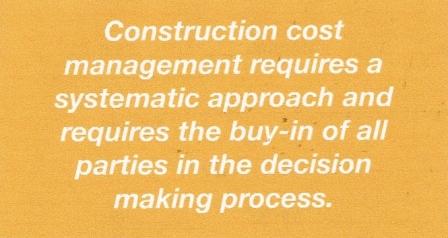

Printable PDF version
Subscribe to our newsletter
Cost Management
Heavy and Light Rail
TBD Bid Index
Windows Vista is Here!
Construction
Management Specialists
111 Pine Street, Suite 1315
San Francisco, CA 94111
(415) 981-9430
www.TBDconsultants.com
Cost
Management
Gordon
Beveridge
Construction cost management requires a systematic approach and requires the buy-in of all parties in the decision making process.
The Project Budget includes Construction Costs (Direct) and Soft Cost (Indirect). The design team is usually focused on the Direct Cost, however it is important to define both categories to ensure there are no cost gaps between categories and it is clearly understood where the demarcation is found (this is very pertinent when Contingency(s) are defined).
The client may have a budget identified, however the planning phase should validate or establish the budgets based on cost model(s) prepared. These cost models should reflect the quality of various buildings and building systems that are envisaged, and relate to schedule and procurement methods. These cost models, broken down into building systems, will then provide a cost skeleton to review alternates and to track the various projects through all of the design phases.

As decisions must be made on building components the cost of same needs to be identified and checked against the cost models to determine if the targets within the models are being exceeded, and any corrective action can be made or proposed to maintain the systems or building cost. Check estimates should also be made at various milestones. These estimates provide a check on the cost of all components, and update the various contingencies based on the latest data. Requesting and reconciling check estimates by a contractor or CM can be a useful tool to verify budgets and provide a second opinion.
Value Engineering should be ongoing as decisions are made to determine which alternates fit within the budget and goals set by the client. These goals may include Life Cycle Costing and Sustainability requirements.

Identifying contingency items, and applying appropriate allowances to cover same, needs to be embedded in the cost model(s). These Contingencies identify items of Risk that must be allowed for as appropriate and reviewed at various stages of the project. These include Escalation, Design Contingency, Phasing, and Bidding Contingency.
Above all, the design team, client and contractor must be in harmony with the goals of the cost management process. Communication internally and with the client is critical to make informed decisions in a timely manner.
Heavy and Light Rail Systems - On Track
Geoff
Canham
Light Rail and Heavy Rail systems are redefining our cities. What makes Light Rail light and Heavy Rail heavy? What differentiates one from the other? This article looks into these issues.
Construction prices continue on their upward surge, but how long is this trend going to continue, and what would we recommend as allowance for future escalation? Click the link below for our review of the current market and the updated TDB Bid Index.
Geoff’s
IT Gems
Windows
Vista is Here!
Microsoft XP has proved to be a very popular operating system, but now Windows Vista has finally arrived. Will the transition be easy or painful? What's new, and what's the same? Geoff has been trying out the beta version of Vista, and you can read his review of the new operating system by clicking the link below.
Design consultant: Katie Levine of Vallance, Inc.